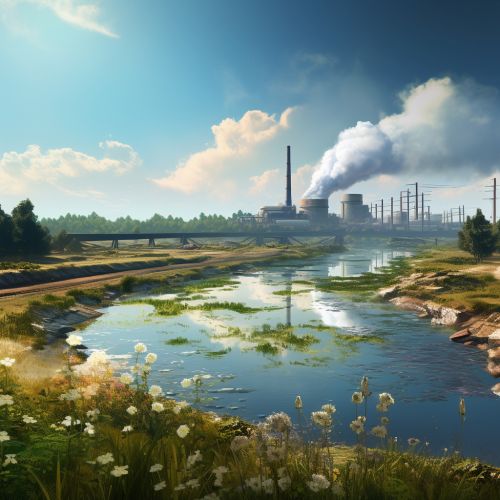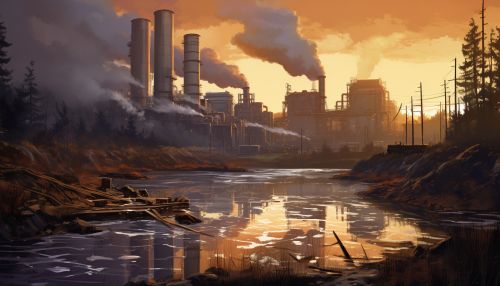Groundwater pollution
Introduction
Groundwater pollution, also known as groundwater contamination, involves the presence of man-made pollutants in the natural underground water reservoirs, or aquifers. This pollution can occur from a variety of sources and can lead to serious health and environmental consequences. Groundwater is a critical resource, providing drinking water for half the world's population and accounting for 43% of all the water used for irrigation globally.
Sources of Groundwater Pollution
Groundwater pollution can originate from a number of sources, both point and non-point. Point sources are specific, identifiable sources, such as a factory or sewage treatment plant. Non-point sources are more diffuse, such as agricultural runoff or urban stormwater.
Point Sources
Point sources of groundwater pollution include industrial waste disposal sites, landfills, and underground storage tanks. These sources can contaminate groundwater with a variety of pollutants, including heavy metals, organic compounds, and radioactive waste.


Non-Point Sources
Non-point sources of groundwater pollution are often associated with agricultural activities. These can include the use of fertilizers and pesticides, which can leach into the groundwater, and livestock waste, which can contaminate groundwater with bacteria and viruses.
Effects of Groundwater Pollution
The effects of groundwater pollution can be far-reaching, impacting both human health and the environment.
Human Health Effects
Groundwater pollution can lead to a variety of health problems in humans. These can range from minor illnesses, such as gastrointestinal upset, to more serious conditions, such as cancer or neurological disorders. The specific health effects depend on the type and concentration of the pollutants in the groundwater.
Environmental Effects
Groundwater pollution can also have significant environmental impacts. It can harm wildlife, particularly aquatic species that rely on clean water for survival. In addition, groundwater pollution can damage ecosystems by disrupting the balance of nutrients and other chemicals in the environment.
Prevention and Remediation
Preventing and remediating groundwater pollution is a complex task that requires a combination of regulatory measures, technological solutions, and public education.
Regulatory Measures
Regulatory measures can play a key role in preventing groundwater pollution. These can include laws and regulations that limit the discharge of pollutants into the environment, as well as policies that promote the use of cleaner technologies and practices.
Technological Solutions
Technological solutions can also be effective in preventing and remediating groundwater pollution. These can include advanced wastewater treatment technologies, as well as methods for cleaning up contaminated groundwater, such as pump-and-treat systems and in situ bioremediation.
Public Education
Public education is another important component of preventing groundwater pollution. By educating the public about the sources and effects of groundwater pollution, it is possible to encourage behaviors that reduce the risk of contamination.
